Height of mature honeysuckle bushes and trees
Honeysuckle (Lonícera) is a group of plants in the Honeysuckle family (Caprifoliaceae), numbering more than 250 varieties (as of 2020). Gathered in pairs, early ripening, large, elongated fruits of most erect, climbing and creeping shrubs are edible. Decorative and wild berries should not be eaten. In garden plots they serve as living fences and green walls. Let us tell you how tall honeysuckle grows.
Dimensions of an edible honeysuckle bush
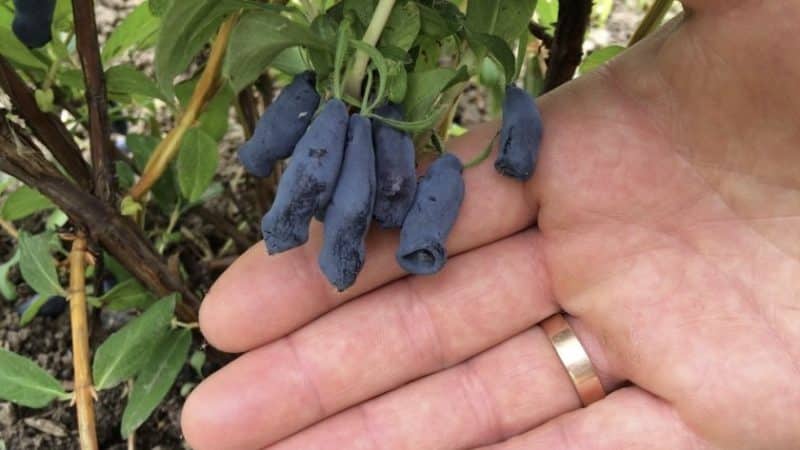
Breeders regularly develop new varieties of honeysuckle for food and decorative purposes. Both bush and climbing plants are characterized by vigorous flowering, and as a result of selection, to the detriment of fruiting, samples with dense foliage, without gaps, were bred. The size of the plant depends on the variety, quality and method of care (pruning, shaping). The height of the shoots and the density of the crown are influenced by the type of soil and the illumination of the area.
Important! The maximum height of a bush of climbing and creeping varieties (there are more than 25 of them) reaches 6 m. Honeysuckle vines are not able to maintain a vertical position on their own and need support - a peg, arch or guide thread.
Bush garden honeysuckle grows up to 3 m in height, but its size is artificially limited for aesthetics and ease of harvesting. Removing excessively long shoots also has a positive effect on the quality of the berries - nutrients are not wasted on empty arrows, but go into the fruit.
Mature bush
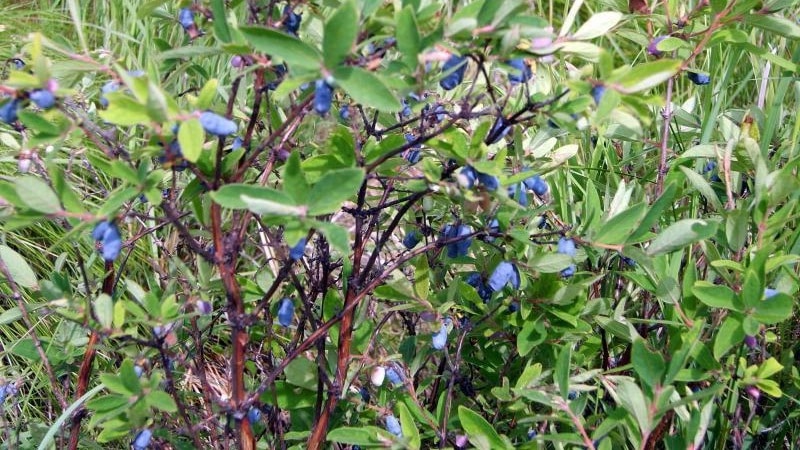
The honeysuckle bush has 3-5 skeletal branches and a large number of annual green-brown shoots. When cultivated, the bush is thinned out, eliminating inward arrows to ensure air circulation and sufficient light. The average size of an adult wild honeysuckle bush is 1.3 m. Garden varieties reach 2 m without pruning.
Read also:
Trees
The maximum height of tree varieties is 3 m. In such species, skeletal branches grow from a single base (height - 20-30 cm). There are a minimum of shoot branches; due to their high location relative to the ground, they are less likely to germinate on their own. Tree varieties are not distinguished by active fruiting. The service life of one tree is less than 15 years. In garden breeding, they are used for interspecific pollination, without which fruiting is impossible.
High varieties of honeysuckle
The leader in fruitfulness among tall edible varieties of honeysuckle is the Bakcharsky giant, reaching 1.9 m. Bred as a result of selection, it is distinguished by an oval shape of a sparse crown, straight thick branches and low fruit shedding. The weight of the berries is proportional to the size of the plant as a whole - up to 2.5 g. By the fifth year, the bush produces 4-6 kg of sweet and sour berries. The variety was bred at the Siberian Horticulture Research Institute named after. M.A. Lisavenko (Barnaul), and already on his basis, by crossing, they are trying to obtain species that are even more resistant to shedding.
Other popular large varieties of shrub and tree-like honeysuckle species:
- Strawberry sensation – a late variety that produces a harvest with a unique strawberry-sugar flavor. The shrub grows up to 1.4 m, but is pruned to increase the size of the fruit.
- In memory of Gidzyuk. The variety with pear-shaped berries grows up to 1.8 m and produces up to 4 kg of yield. Does not crumble until fully ripe. The fruits are characterized by a slight bitterness.
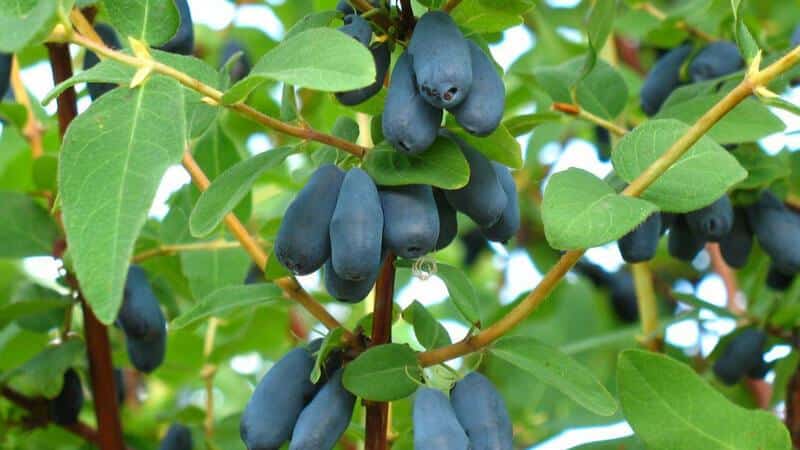
- Volkhova - a variety of Leningrad selection, growing up to 2 m. The yield is average for this crown size - no more than 2.6 kg per bush for 5-6 years. The soft berry has a sweet taste and strawberry aroma, suitable for fresh dessert use.
- Nymph – a tall species up to 1.8 m, prone to second flowering. The late re-harvest is not so abundant, but in general you can get up to 3 kg of dense spindle-shaped berries from the bush. In preparations it is valued for its ability to keep its shape even after freezing or cooking.
- Moskovskaya 23 named after the capital's breeding group. The bush grows up to 1.5 m in diameter and 1.8 m in height. Without thinning, it quickly overgrows and requires removal of the middle shoots. Yields up to 3 kg of tart and sour dessert berries. After freezing, the bitterness disappears.
- Titmouse - spreading bush with a spherical crown. It reaches a height of 1.9 m. The elongated oval berries have a characteristic minty-refreshing aftertaste, which is valued in compotes and preserves.
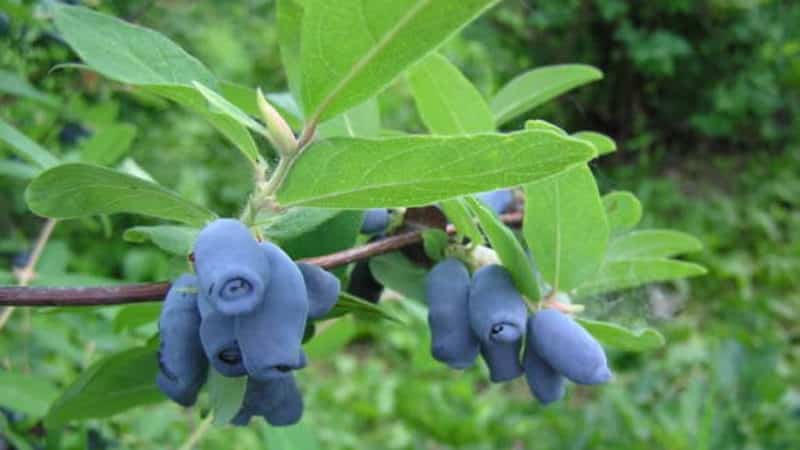
- Fortune – a tall branched tree-like variety that grows up to 2.5 m without pruning. The fruits are elongated, bell-shaped, sweet and sour without bitterness.
- Leningrad giant demanding of soil and light. In good conditions (humidity and shade) it grows up to 2.5 m. The fruits are sour, but aromatic thanks to the purple pollen that showers the berries. The fruits are grouped into large, sometimes fused clusters, easily collected, without damage. Productivity – up to 3 kg per bush. The variety is frost-resistant.
- The Giant's Daughter - the result of crossing the Turchaninov hybrid and the Bakcharsky giant variety.Almost black fruits are the largest of the existing species. Berry weight – up to 2.5 g.
- Ussulga - one of the new varieties. It is distinguished by large barrel-shaped fruits and an outstanding height of up to 2.1 m. The sweet and sour taste of the berries and good density without voids promise to make the species very popular.
Time will tell the quality of varieties bred less than 7 years ago. Breeders and gardeners still have to assess the stability of the species and the preservation of varietal characteristics at the next stage of breeding.
Stages and dynamics of bush growth

Material for planting honeysuckle is purchased or grown independently. Forms of propagation of shrubs:
- By layering – annual shoots, fixed along the ground in spring for rooting. A small depression is first made so that rainwater does not erode the soil around the branch. A year later, in the spring or at the end of the season in the fall, when the plant produces several strong shoots, the young one is separated from the mother bush with pruning shears. The top of the new bush is fixed vertically to a guide (peg or pole), and the roots are regularly sprinkled with soil and watered. The established shoots are dug up and transplanted to a permanent place by the end of the second season.
- Cuttings – small pieces of stem with two internodes. To propagate honeysuckle, green or lignified cuttings are used. Young ones are cut in May after flowering, kept in water until roots appear, then kept in a greenhouse until autumn (in the ground at an angle of 45° to the surface). After wintering in peat and a warm season, a 2-year-old seedling is obtained, ready for transplanting to a permanent place.
- Seeds from ripened berries. First, they are prepared for sowing by placing them in the freezer (-4°C) for 3 weeks. This will ensure germination.In March, the seeds are poured into fertile soil under a cap of peat or sand, and a greenhouse effect is created using film or glass. Germination requires warmth and watering. The first shoots appear by mid-April. After another month, the most viable ones are planted. Grow in a greenhouse or in summer in open ground in a shaded area.
Seeds are the most difficult method of growing and do not guarantee a successful result. When reproduced from seeds, many varieties and hybrids lose their hereditary characteristics (berry size, taste, sugar content). After the first harvest, culling is carried out.
Honeysuckle grows slowly, which frightens inexperienced gardeners. Shrub development stages and target dates:
- In the first year, the cutting and seed produce a shoot 5-7 cm high. The arrows need support - a vertical guide.
- In the third year, the bush with 1-2 skeletal branches grows to 40-60 cm.
- The sixth year is the maximum crown size. The honeysuckle bush reaches the height and volume required by the variety. For 4-5 years from this moment, the size of the plant does not change.
Fruiting of shrubs grown from cuttings or layering begins at 3-4 years. For those bred from seed, this period occurs 2-3 years later.
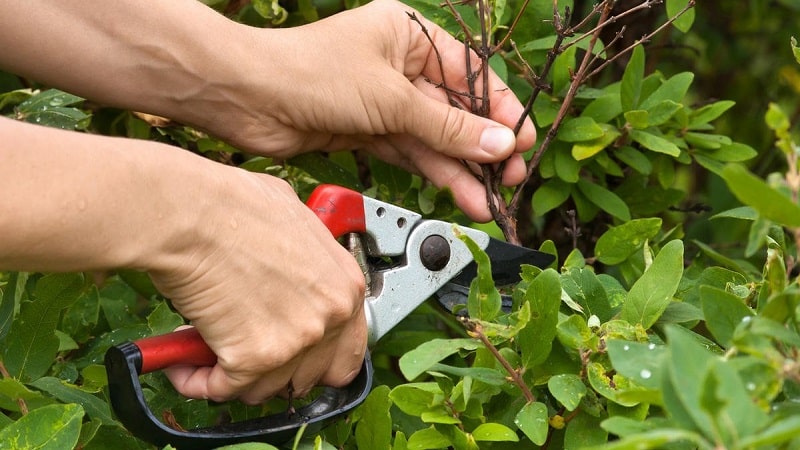
Honeysuckle is pruned from the first year. Types of jobs:
- Formative pruning – processing of the first year to give the future crown a contour. From the mass of shoots, 2-3 of the densest ones are left. It is carried out in the spring, immediately after planting or the winter season, if honeysuckle was planted in the fall. For bush varieties, the lower part is removed, and the crown is designed according to a template. For decorative ones, the upper branches are cut off so as not to expose the root area.
- Regular pruning – prevention of overgrowth, which leads to weakening of the plant, and removal of dry branches.It is carried out 1-2 times a year after the spring sap flow before flowering and before the onset of frost in preparation for wintering. Pruning maintains optimal volume and shape, removing lying branches prevents rotting.
- Sanitary pruning has no deadlines or schedule. Dead branches, shoots with unknown plaque and serious changes in the color of the bark or leaves are removed immediately after detection.
- Anti-aging pruning is carried out from 6-7 years, when overgrown and dry branches appear. Large shoots are cut down at the root at a height of 10-15 cm, small ones are sometimes left.
Treatment is carried out in the fall, when the movement of juices is minimized. Before pruning (10-14 days before), reduce watering. Places of large cuts are covered with garden varnish to prevent rotting and damage by pests.
Read also:
Frost-resistant early ripening honeysuckle variety “Lakomka”
Conclusion
The main value of honeysuckle is its early fruiting, 2-3 weeks before other garden crops. In the garden, bush and decorative honeysuckle serve as zoning fences and decorative walls. Before purchasing planting material, it is important to check the appearance and size of a particular variety using photos and purchase cuttings of guaranteed quality.